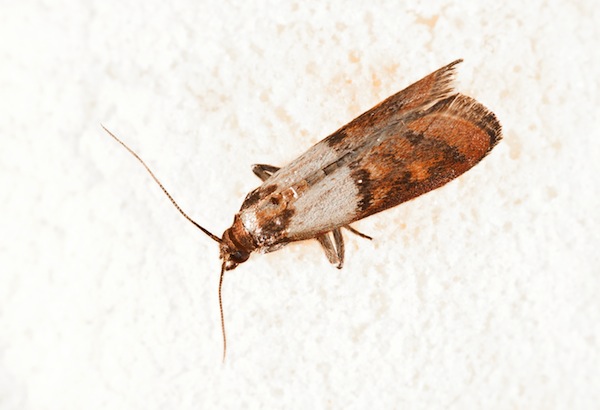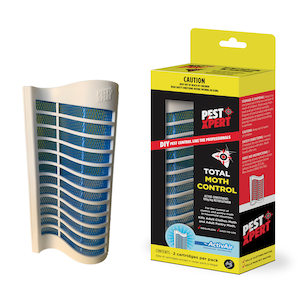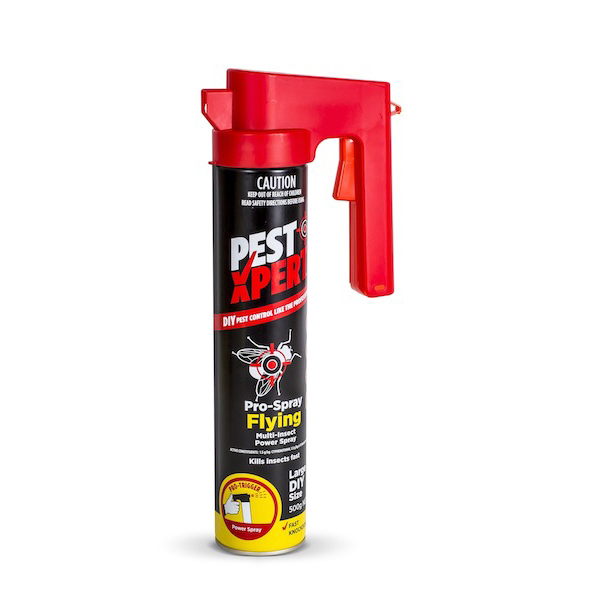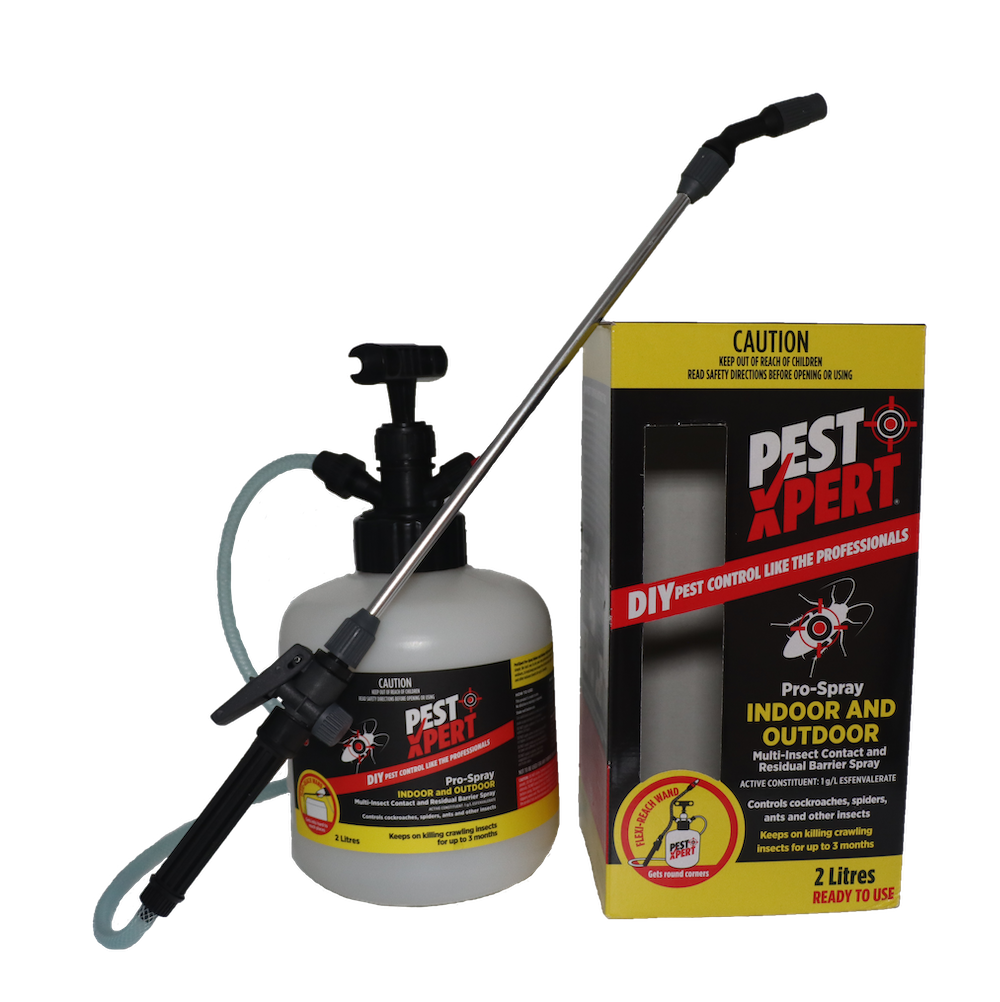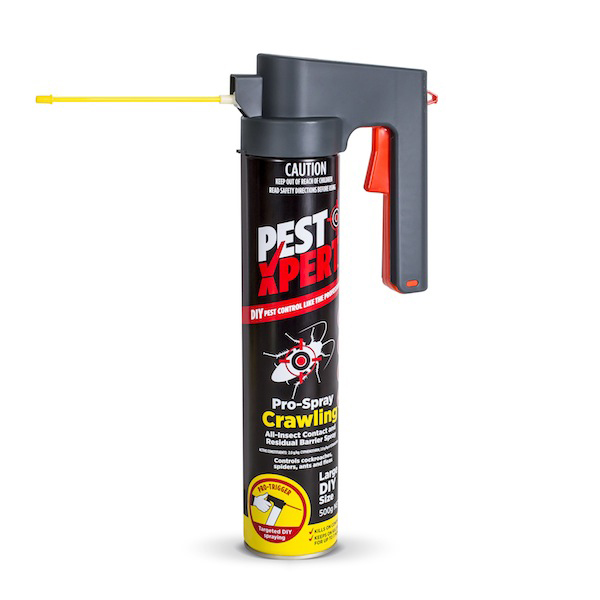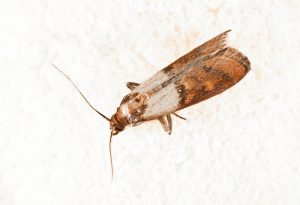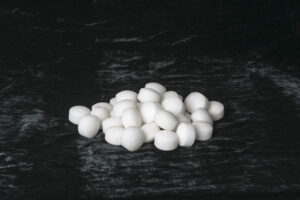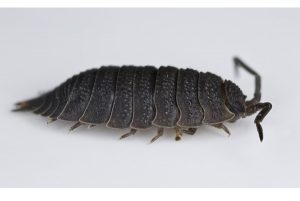
Getting rid of pantry moths
You may have noticed some small moths flying about the kitchen at dusk or at night – not something that would normally bother you. However, you then find some strange webbing material in some open biscuit packets and a bag of flour. You look closer and find a small pale caterpillar. You investigate further and notice some webbing and a small brown case (the pupae) up on the ceiling. The penny drops – you have a pantry moth infestation!

The Summer months are the peak season for pantry moths. Although there are a few species of “Pantry moth”, the main species in Australia is the Indian Meal moth. Eggs are laid by the adult moths on or near a suitable food source. They will eat a wide range of food including cereals, biscuits, flour, nuts, dried fruit, spices and cocoa. It is the larvae that hatch that cause all the damage. The larvae are very adept and persistent in seeking out suitable food. The small larvae are capable of moving around the thread of a screw top container, even with the top on! Larger larvae are capable of chewing through plastic wrappers on unopened food packets.
Since the adults do not fly great distances, unless the adults moths have flown in from a neighbour’s house, the likelihood is that they will have come in on some of the food items you have bought. Once you have a pantry moth infestation, they can be difficult to eradicate unless you are thorough in your treatment. There are a number of key steps to eliminate the infestation;
1) Inspect all your food cupboards and each container individually. Don’t assume just because the container looks secure or unopened that it will not have been affected.
2) Throw out all affected food. Place into sealed bags and remove from house immediately.
3) Clean all food cupboards. Vacuum all shelves and corners, then wash with soap and water. This is to remove all eggs and pupae.
4) Spray all shelves with an insecticide. Spraying cupboards, particularly the edges and corners of shelves with provide lasting protection from the larvae. Make sure the product is labeled for this use and ensure no food comes into contact with the treatment. (see below).
5) Spray any adult moths with a “fly spray”, such as PestXpert Pro-Spray Flying. This targets the adults before they can breed or lay (any more) eggs. Pantry moth sticky traps can be used as part of a treatment. However, they only target male moths as they use female pheromones as their attractant.
6) Place all food in insect proof containers. This means hard plastic containers with sealed lids. (Remember they can crawl around the thread of screw tops!).
7) Use PestXpert Total Moth Control to prevent future infestations. The continuous release of the odourless Activ-Air ingredient from Total Moth Control provides protection from adult moth for up to 3 months.
Once you have gained control, make sure you maintain a good cleaning and storage regime in the kitchen and don’t forget to inspect incoming good for unwanted hitch-hikers.
PESTXPERT PRODUCTS FOR PANTRY MOTH TREATMENTS
For adult moths
PestXpert Total Moth Control kills adult moths and provides continuous protection for up to 3 months. Just place in your food cupboards. Also works on clothes moths.
Pestxpert Pro-Spray Flying aerosol delivers fine droplets to target flying moths.
For larvae
Pestxpert Indoor and Outdoor has a flexible nozzle to target hard to reach places where larvae and pupae may hide, providing long lasting protection.
PestXpert Pro-Spray Crawling PestXpert Pro-Spray Crawling aerosol has an extendable nozzle for spraying food cupboards, cracks and crevices to provide long lasting protection from larvae.

